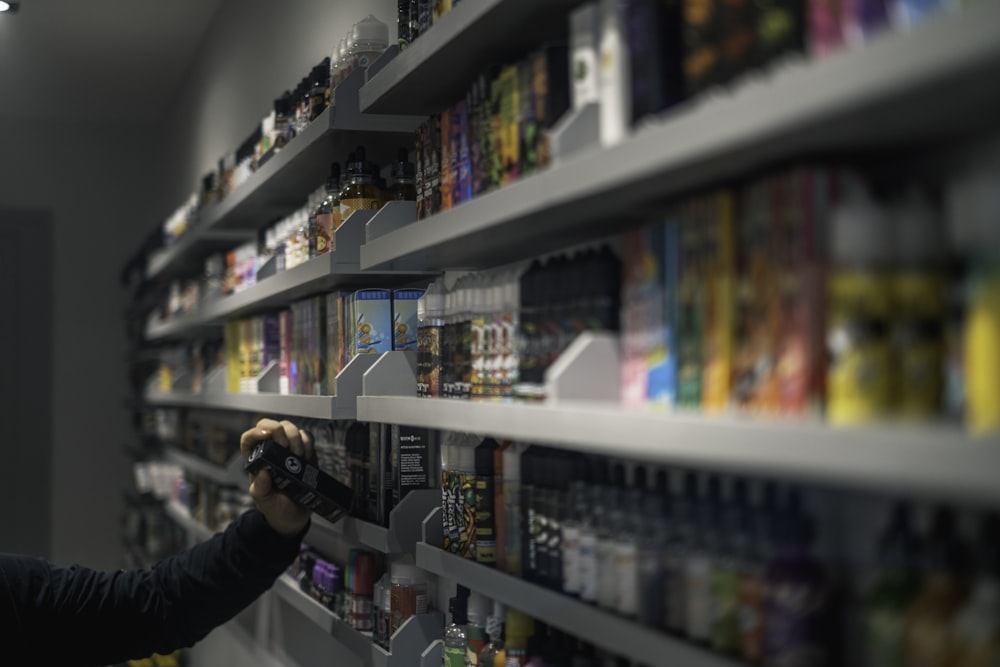The alkaloid nicotine is present in plants pertaining to the nightshade family, such as potatoes, tomatoes, and peppers. However, it is only prevalent enough to be extracted from and refined from the tobacco plant. Although it is expensive, nicotine can also be produced in a lab.
Contrary to popular belief, nicotine has contrasting stimulant and relaxant properties, with users describing various effects, including mood elevation, attentiveness, and tranquility. Most vapers who were first smokers use e-juice with some quantity of nicotine because it is widely believed to be physically and psychologically addicting. Although commercial e-liquid can be purchased with different levels of nicotine, including none, most vapers choose to do so.
Various nicotine strengths are available in vape juice, so choosing the proper one is crucial for a beginner. If you vape too much, you might cough, and if you vape too little, you might worry if vaping will even be effective for you. Or you can spend a ton of money on a massive bottle of quality juice only to discover that the amount of nicotine it contains is insufficient to quell your cravings.
The nicotine content in e-liquids ranges from 0 mg/mL to more than 50 mg/mL. Instead of using concentrations, nicotine strengths are sometimes reported as percentages. At first, all of this could seem confusing, but it doesn't have to be! When selecting nicotine strength, this guide will assist you in making the appropriate decision and teach you how to shop effectively.
Regular Nicotine and nic salts: two great options

Photo by E-Liquids UK on Unsplash
Nicotine strengths in online stores have recently increased from 3 mg to 25 mg or even 60 mg due to the popularity of nic salts e-liquid. Higher nicotine doses are more palatable for vapers when using nic salts, also known as protonated nicotine, which employs an acid (often benzoic acid) to smoothen the throat sensation.
Regular nicotine, also known as freebase nicotine, is unpleasant at very high levels, in contrast to nic salts. There are a few exceptions, but generally, e-liquid that is offered at a nicotine concentration of 18 mg/mL or less is created with conventional nicotine. In contrast, juice that is stronger than that is made with nic salts. Most individuals state that 6 mg of ordinary nic feels roughly equivalent to 20–25 mg of nic salts when they take it.
Salt nicotine has come to be associated with pod systems and other entry-level vaporizers because of its high concentrations and limited power and vapor output. The tiny atomizers require more significant nicotine concentrations to give the user of a pod vape a pleasurable experience.
What’s the best nicotine strength for you?
When choosing a nicotine level for a new vaper, it's essential to consider their smoking history and the sort of device they expect to use. As vapor output ultimately determines how much nicotine is inhaled per puff, we have grouped our recommendations by this characteristic to make the market easier to traverse.
You'll likely fall in the lower range of each recommendation if you sometimes smoke up to a few cigarettes daily. You'll fall somewhere in the middle if you smoke 10–20 cigarettes daily. You're most likely in the upper category if you smoke more than a pack daily.
Remember that the strengths listed in this section are just that—suggestions. Use these as a starting point, but don't be afraid to experiment with different nicotine levels if you prefer firmer or weaker vapor. Remember that for most smokers, nicotine alone poses no health danger. The nicotine level that prevents you from using combustible cigarettes is the finest!
Low vapor production
Discrete clouds resemble the smoke from a cigarette. This category comprises most market-available pod systems and MTL tanks with extremely restricted airflow. For this group, high-strength nic salts are the most widely used option. (Many e-liquid producers no longer provide flavors with typical nicotine concentrations greater than 6 mg/mL.)
- Regular nicotine: 12-24 mg/mL
- Nicotine salts: 30-60 mg/mL
Medium vapor production
There are clouds, but not the giant kind. This category of devices includes products from almost every product line. This includes sub ohm coil-compatible pod systems, airier MTL tanks, and even very restricted-draw sub ohm tanks.
- Regular nicotine: 6-12 mg/mL
- Nicotine salts: 20-30 mg/mL
High vapor production
Large clouds, Strong sub ohm tanks, and rebuildable atomizers with wide airflow channels fall under this category. Since these devices emit so much vapor, it may not be easy to find nic salts for this category because consuming too much nic quickly is so simple. Most people who use sub ohm vaping equipment pick regular nicotine juices with very low strengths. Even 6 mg/mL of e-liquid might be too potent, given the vapor some of these devices can produce!
- Regular nicotine: 1.5-6 mg/mL
- Nicotine salts: 1.5-6 mg/mL
We suggest new vapers attempt a low vapor device—either a pod system or MTL tank—when it comes to stopping smoking. These will simulate the drag of a cigarette, which might make the switch from smoking to vaping easier for smokers.
However, a more powerful pod system or a sub-ohm tank may be ideal if you like a constrained direct-lung pull or even an open draw, which many users prefer. You should test out various gadget types. No action is ever right or wrong.
Converting percentage to mg/mL
Photo by jeshoots on Unsplash
Assume that you have already tried a few different nicotine strengths and chosen the one that satisfies your cravings. Sometimes it can still be perplexing once you narrow things down. Manufacturers occasionally list nicotine strength as a percentage, such as 0.3%, 0.6%, 2.5%, and 5%. What's the difference between nicotine strengths expressed as percentages versus those written as mg/mL? How is the conversion between the two done?
Nicotine Strength in mg/mL
Most of the time, the nicotine content of e-liquids is indicated in milligrams per milliliter, or mg/mL. This means that there is the appropriate amount of nicotine in each milliliter of e-liquid in the bottle.
This indicates that each milliliter of 6 mg/mL e-juice contains 6 mg of nicotine. Add up the milliliters and the strength in mg/mL. You have if you need to calculate the overall nicotine content of a bottle or tank.
For instance, a 5 mL vape tank filled with 6 mg/mL e-liquid would contain 5 mL x 6 mg/mL = 30 mg of nicotine. The total amount of nicotine in a 10 mL bottle of 6 mg/mL e-liquid is 60 mg.
Nicotine Strengths as percentages
Nicotine strengths expressed as percentages are similar yet slightly simpler. In percentages, the volumes of both the mass (in mg) and the volume (in mL) are used. In layman's terms, percentages like 0.3% or 1.8% indicate how much nicotine is present in the liquid in the bottle.
Any amount you measure out will include 1.2% nicotine and 98.8% PG, VG, and flavorings if you have some e-liquid containing 1.2% nicotine.
Technically speaking, this measurement is known as "nicotine by volume," much like the percentages on a bottle of an alcoholic beverage is known as "alcohol by volume," or simply "ABV." The term "nicotine by volume" is also abbreviated as NBV.
Even though you could calculate the percentage by mass if you wanted to, most e-liquid manufacturers don't. Manufacturers measure e-juice in milliliters, just like vapers do.
Converting from mg/mL to percent and back
It is simple to convert nicotine intensity expressed in mg/mL to a percentage—double the mg/mL value by 10. Therefore, if the concentration of your e-juice is 6 mg/mL, it has a 0.6% concentration. 2.5% of an e-juice contains 25 mg. And this would be 7.2% if you used a nicotine base with a 72 mg/mL high strength.
There is no more straightforward way to convert. Multiply it by 10 to change from percentages to mg/mL once more. All there is to it is that!
Congratulations, you won't ever make a lousy e-juice purchase again!
You may now comfortably browse the e-liquid market and purchase juice in the strength range that will probably satisfy your nicotine needs, assuming the math lesson hasn't left you too traumatized. Additionally, you can quickly translate between them and explain what mg/mL and the percentage amounts on e-liquids signify. You will always be aware of what you are getting when you order. But if you fail the first time, keep trying! You will eventually locate the e-liquid strength that is most effective for you, given the wide range of nicotine levels accessible.


